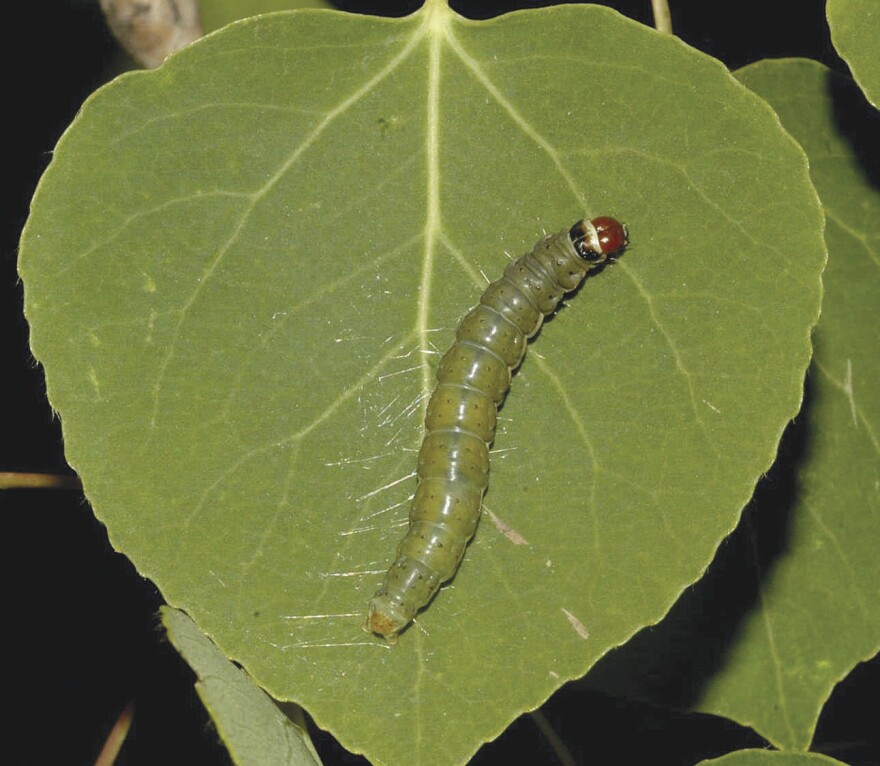In the global carbon economy, forests act like leafy savings accounts. They take carbon dioxide from the air during photosynthesis, convert it into biomass, and deposit it for years or even centuries in wood and soil.
Rising levels of CO2 in the world’s atmosphere are a source of extra carbon cash flow that can help trees grow faster. But the ability of forests to soak up this excess CO2 is being undermined by munching bugs.
That was recently shown by a University of Wisconsin experiment simulating what happens to stands of aspens and birch when there’s more CO2 in the atmosphere. They show that under the conditions predicted to be with us by 2050, damage caused by caterpillars and other leaf-munching insects nearly doubles.
The bugs, it turns out, are like sloppy Super Bowl watchers munching fast food. They feed more than usual, leaving partly chewed leftovers, and droppings, falling to the forest floor to decay quickly. As a result, more of the tree’s carbon is returned to the atmosphere – leaving less to be squirreled away in wood and soil.
But why do insects get the munchies in a high-CO2 forest? It’s chemistry.
When trees like aspens grow in higher-CO2 air they produce leaves with lower levels of nutrients like nitrogen. For insects those leaves are like fluffy white bread instead of protein-rich whole-meal bread – so the famished bugs have to eat more.
It’s only one impact on trees in a climate-change world, but it might be a big one.







